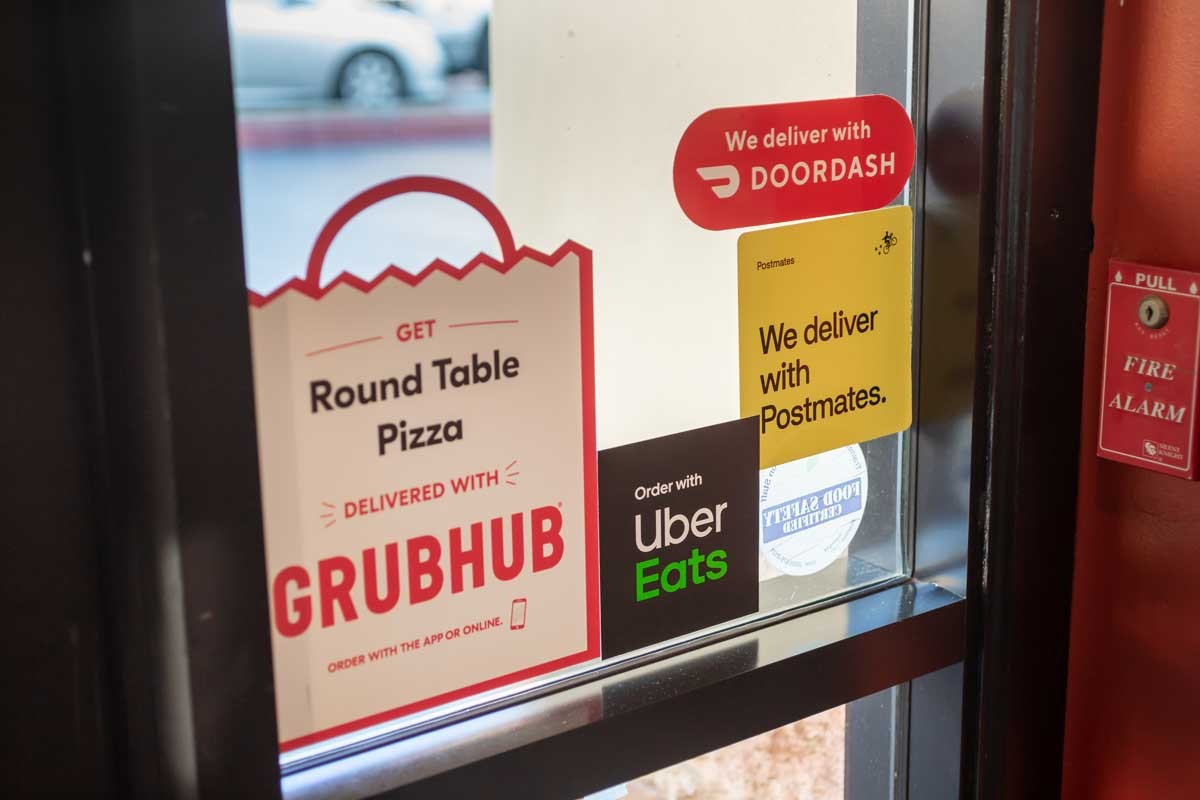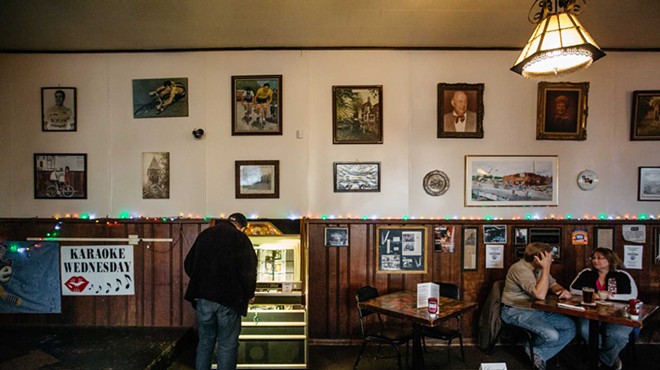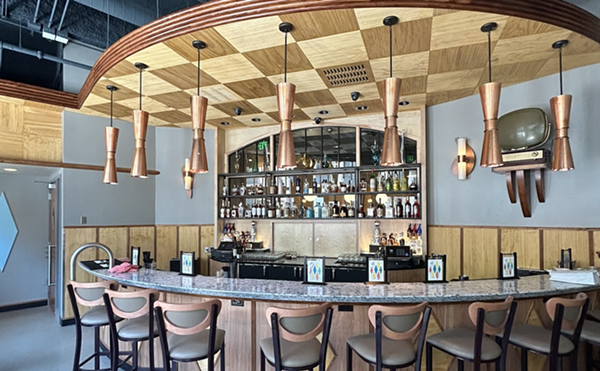Chowhound is a weekly column about what’s trending in Detroit food culture. Tips: [email protected].
Has a food delivery service ever let you down? Have you ever used one and gotten something for nothing? If you answered yes to either of those questions, you’re affirming claims made by two former DoorDash drivers I recently interviewed, who say things go wrong in that line of work routinely, and for all kinds of reasons. To hear them tell it, chinks in the chain of possession, problematic service protocols, and plain dishonesty in customers and drivers alike all contribute to a food industry service that often fails to deliver.
“Anything can happen,” Jasmine, my first interviewee, couched cryptically to open the conversation. She drove for both DoorDash and Instacart from 2021 to 2022. “People don’t like to answer the door for starters, and that causes lots of problems.”
“There’s all kinds of issues and a high rate of delivery failures,” seconded Adam, who started as a “Dasher” for a time in 2018 before delivering regularly between 2020 and 2022. “Try reaching people on the 20th floor of the Penobscot Building and trying to find parking that you won’t have to pay for, because there’s no reimbursement for that, while everything’s being tracked and timed [by the delivery apps and their users].”
Outlining working rules they ran with as drivers, A & J explained what pick-up and delivery-drop procedures they were expected to follow, along with what the real rules of the road became after they confronted the actual rigors of their jobs as meal jockeys. Officially, after arriving at a delivery destination, they were required to alert the customer (click, call, text, knock, ring, etc.). Failing any response, drivers are then required to remain at the location for a full five minutes in an effort to confirm customer receipt of service. During that time, delivery service software can verify a driver’s whereabouts.
“Some [customers] learn to play the game,” Adam insists. “After those five minutes, we’re supposed to leave our delivery ‘in a safe space’ and take a pic. Well, customers catch on quick. They learn to wait me out until I leave that order, then grab it and still claim they couldn’t find it right there. And in that case, it becomes a race to the [app] button. If I’m not quicker to click ‘order has been delivered’ than they are to hit ‘didn’t receive food,’ I’m screwed. The [food and gratuity] charges get reversed, so I’m out my DoorDash money, the tip, and possibly face my account being suspended. It’s bullshit, basically.”
On the flip side, Adam admits to playing that game himself.
“I was sometimes that customer saying I didn’t get my food, just because I felt it was a little too expensive after [eating it].”
While Jasmine didn’t own-up to anything similar, she testified to seeing fellow drivers doing each other dirty by stealing orders.
“I’ve definitely seen it done, but I wouldn’t do it because if I go to pick up an order and it’s gone, I don’t get paid. Then, it’s a whole process that isn’t worth going through, really: statements, pictures you’re supposed to take, and after all that they [the services] might pay you half. It happens a lot. People pick up their own orders and one or two sitting next to it.”
According to both ex-Dashers, this can happen when restaurants don’t do their due diligence monitoring who’s coming and going with all those food orders. Citing some big corporate chains like Chipotle, Chick-fil-A, Tropical Smoothie Café, and Wingstop as culpable in such instances, A & J elaborated.
“They just set out the orders and that’s it,” Jasmine explained. “Other places keep orders behind the counter. They have our names and check. Sometimes, people lose their money and their food in all that mess. That’s the risk nowadays. It’s all about what you can prove. Drivers need to take their pictures for sure. I’ve seen drivers take pictures of their food then still steal other people’s. It’s pretty rough, really.”
Adam agreed. And then some.
“Anything can happen to your food. I was hungry sometimes, and what I was delivering smelled good. I did get my account suspended eventually for that kind of thing, though.”
Unfortunately, even delivery system checks and fail-safes built into the apps aren’t foolproof.
“We had an emergency button with options,” Adam said. “‘Can’t deliver.’ ‘Order not ready.’ ‘Restaurant closed.’ ‘Restaurant too busy.’ Or even just, ‘I don’t want order anymore.’ Even if I’ve already grabbed the food, I can hit one of those buttons at any time prior to clicking and confirming receipt. If you’ve driven for these services, you learn the loopholes. Restaurant employees just press ‘order is done’ and set stuff on a shelf. I can just pick up whatever I want at that point and walk out with it. As long as I look confident like I know what I’m doing, I can just ‘Dash’ with whatever.”
So, who ultimately pays for all that? Neither driver knows for sure, of course. Yet if this kind of loss to theft by both drivers and consumers happens to the degree Adam and Jasmine estimate (“30% of the time” and “once or twice a shift,” respectively) these problems would appear epidemic, and certainly help to explain all the news feeds we read these days of retailers citing large-scale losses to theft, which, personally, I’d previously assumed was attributable to old-school, in-store shoplifting. But product and profits lost somewhere over the course of conducting third-party delivery service business just might be amounting to at least as big a siphon on food industry revenue streams.
Does this, perhaps, explain at least partly why prices at sit-down and fast-food restaurants have risen so high since the demand for meal delivery services exploded some four years ago?
“These are huge companies hiring all kinds of independent contractors,” Adam summed up some key points to consider. “The problems begin and end with businesses that are lacking in confirming orders are prepared and picked up correctly, and customers and drivers working a system that’s easy to beat. The companies don’t seem to care, so they must still be making plenty of money.”
“I’d do it again,” Jasmine tossed in her last two cents on the subject. “I was making $600-$700 working twenty hours a week.”
Hmmm. Earning $30-35 an hour doing deliveries on your own schedule, in a corner of food commerce that doesn’t require waiting on tables or working as a line cook for about half that. Maybe I’m finally starting to see what happened to some of the restaurant industry workforce that disappeared when the pandemic struck. DoorDash and its fellows, though flawed in their own ways, had something worthwhile to offer as an employment option. Better pay. Flexible hours. And a smorgasbord of food freebies drivers learned how to feast on illicitly, along with their ever-growing throng of sometimes conscienceless consumers.
What a racket. And from the top to the middlemen and even some bottom feeders not above getting their grub on as cheats, most everyone might be in on it.
Honest John
Kudos to Cadieux Café co-owner John Rutherford, who recently responded to our mid-March review of his establishment. In specific, he reached out to address my impression of Cadieux’s Belgian Beer Stew which, to me, fell a little flat for want of more meat, potatoes, and such.
“Thank you for your review and coverage of the Cadieux Café!” John emailed us enthusiastically. “We have addressed the portion size of the stew! Thanks for pointing it out.”
And thank you, John, for sending a message that sends another I wish more restaurant goers and operators would get. My food writer’s role serves both a consumer advocacy and customer feedback purpose. What’s offered through my observations are opinions informed by 40-plus years of professional experience working in and writing about food and beverage businesses. Everyone’s welcome to take or leave them for whatever they think they’re worth.
Still, let’s get this much straight: I’m not some TikTok flash-in-the-pan talking shit purely for likes from followers. Frankly, anyone who considers themselves a “critic” in this highly subjective arena of taste has too high and mighty a self-perception. I’m just someone with a restaurateur’s background offering considerations and coverage to the restaurants I write about. Every butt-hurt owner, chef, and manager who takes personally whatever any restaurant reviewer might take some issue with should think twice before firing off conspiracy theory emails to editors, along with threats to pull their advertising dollars where applicable. Those kinds of reactions to objective opining are equally pathetic, predictable, and about as old as Gutenberg’s printing press. Unless I get the facts wrong, getting a retraction from me is highly unlikely.
Instead, more reviewees might do well to respond like Mr. Rutherford chose to. He read what we said, looked into the matter himself, decided to act as he did, and then let us in on his decision. Now he gets even more coverage, after getting back to us in a correspondence free of ass-chapped accusations and innuendo.
Nicely done, sir.








